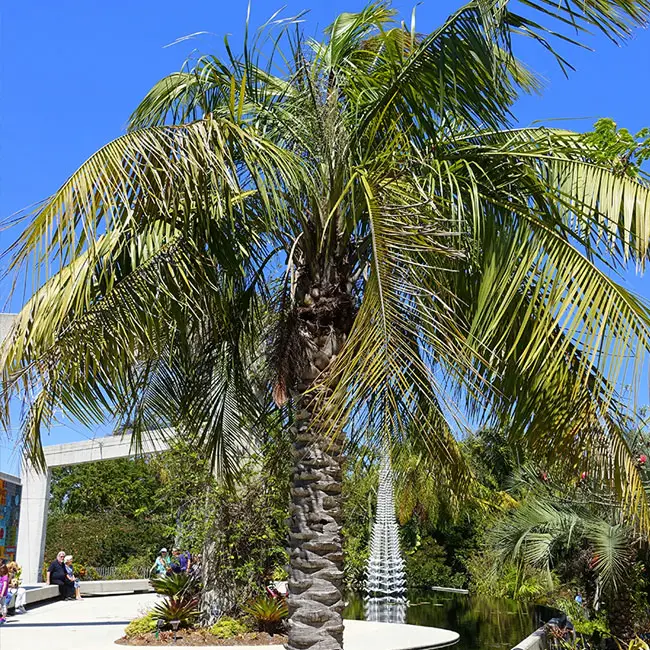
The Mule Palm Tree, scientifically known as Butiagrus nabonnandii, stands as a remarkable hybrid of the Pindo Palm and Queen Palm. This palm, albeit rare and relatively expensive, boasts impressive resilience, thriving in the face of cold, wind, and drought. It’s a remarkably robust choice for gardeners residing in USDA Zone 9a.
Quick Facts:
| Scientific name: | Butiagrus nabonnandii |
| Common names: | The Mule Palm, Butia Queen Cross, Pindo Palm, Butia x Syagrus. |
| Origin: | Native to Florida. |
| Growth Rate: | Moderate to Fast. Up to tall 20 – 30 ft and 5- 10 ft wide. |
| Cold Tolerance: | USDA Zones 9a (20 to 25 F) to 11 (above 40 F). |
| Light Req: | Partial shade to Full sun. |
| Water Req: | Moderate. |
| Soil Req: | Widely adaptable. |
| Fruit: | Yes. Green. |
| Propagation: | Be seed. |
Mule Palm Identifying Characteristics
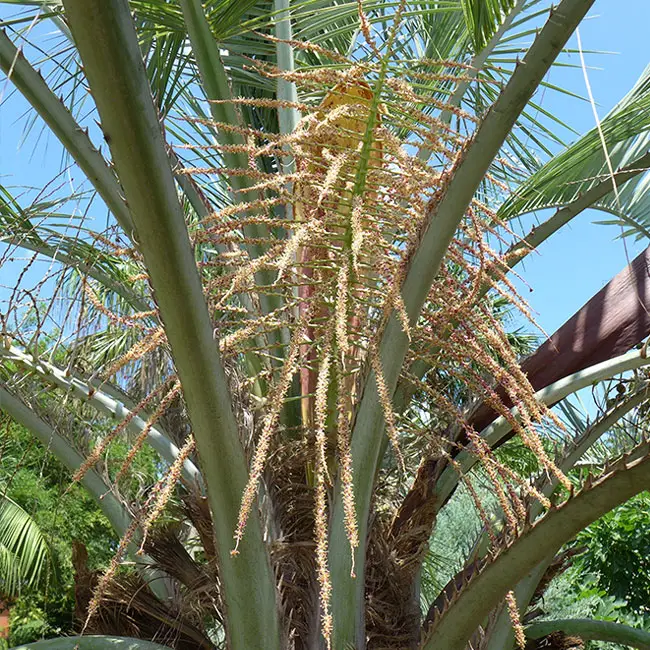
This palm showcases a sturdy gray trunk adorned with the remnants of old leaf bases. Its dark green, gracefully arching leaves emerge directly from the trunk.
These leaves, pinnate or feather-like in nature, measure approximately 5-10 feet in length, featuring anywhere from 80 to 150 leaflets. When in bloom, the Mule Palm produces small pink flowers that adorn branched inflorescences.
How To Care For Mule Palm
The Mule Palm has the potential to reach heights between 20 to 30 feet and spans 5 to 10 feet in width. Impressively cold-hardy, it can withstand temperatures as low as 20°F and, when mature, has been known to brave even colder conditions below 20°F.
It’s an excellent choice for USDA Zones 9a (with temperatures ranging from 20 to 25°F) up to Zone 11 (where temperatures remain above 40°F).
This versatile palm thrives in both partial shade and full sun, and it prefers moist, well-drained soil. It can, however, tolerate short periods of drought once it reaches maturity.
To ensure your Mule Palm remains healthy and free from nutritional deficiencies, apply a high-quality palm fertilizer with a continuous-release formula twice a year during the growing season.
Propagation of the Mule Palm is typically carried out through seeds.
Mule Palm Tree Pictures
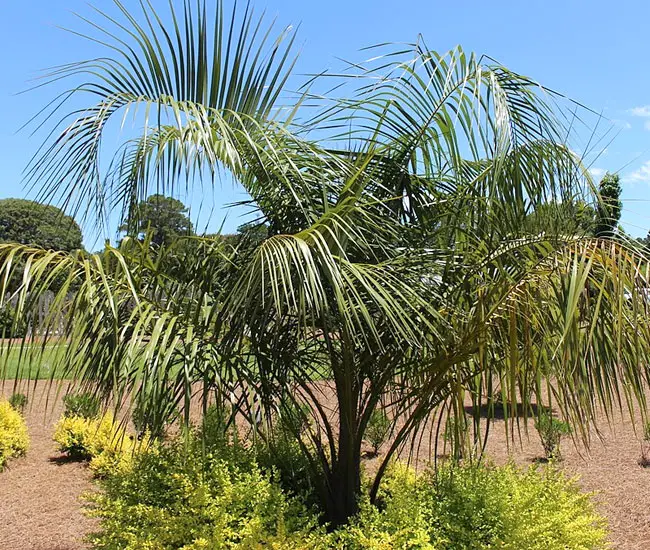
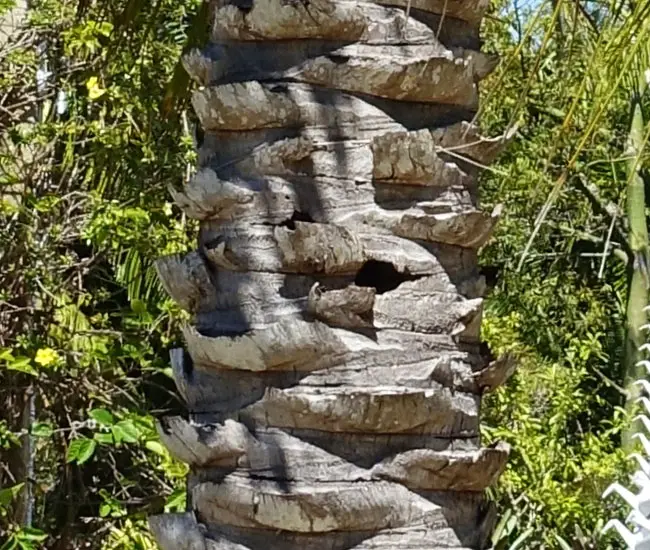
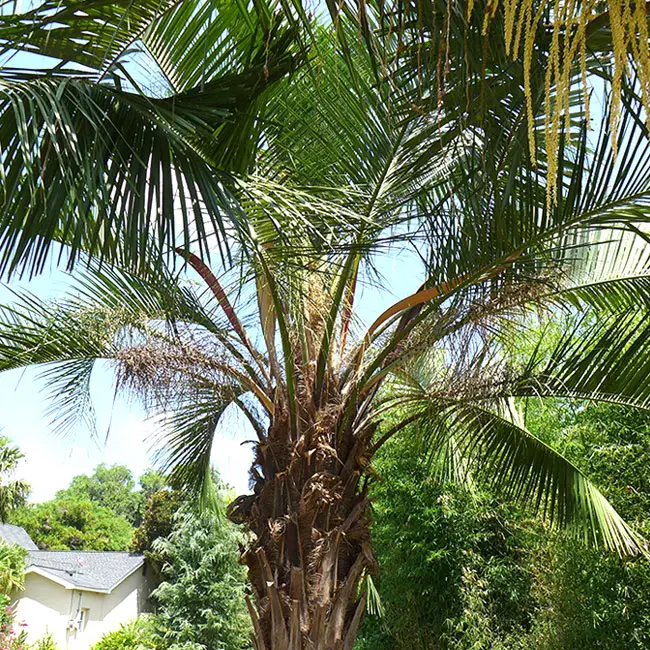

My mule palm is really messy and has too many fronds that are touching the ground. I’d like to trim it to achieve a little better shape. Can it be trimmed note or do i need to wait until summer?
My two palms are not very healthy after this past winter one looks like it’s dead. Will it come back?
You have XButiagrus nabonnandii listed as “native to Florida.” The parent plants are native to Argentina, Uruguay and Bolivia, and the Mule is a hybrid of these, manipulated by humans. It’s not native to anywhere. (But it sure is beautiful.)